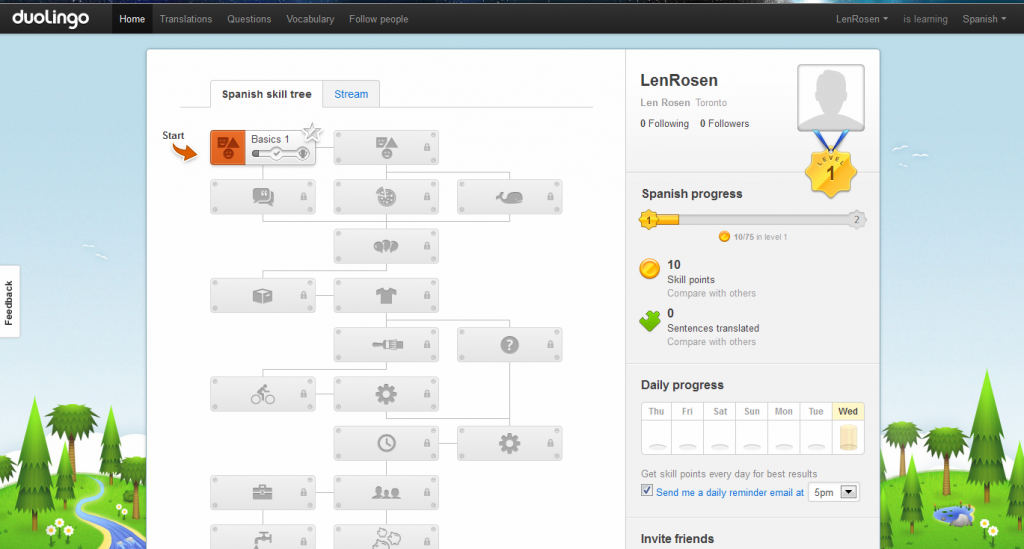Welcome to this week’s 21st Century Technology headlines. Each week I select a few interesting stories about technological innovation that can help us tackle the problems we face this century. As always I encourage you to comment, ask questions and provide input on topics I write about or feature. This week focuses on robots on display, advances in developing drought resistant crops to compensate for climate change, teach yourself a language technology that is helping translate the web, floating islands for countries facing rising sea levels, and solar water bags that decontaminate water on the fly. Enjoy the read.
Cool Robots Come to Las Vegas
This week warbots, drones and emergency rescue robots have invaded the Mandalay Bay Convention Center in Las Vegas for the Association for Unmanned Vehicle Systems International convention.
A number of new aerial drones are on display including Procerus Technologies’ Quad VTOL and AeroVironment’s Raven. Another aerial robot on display is AgAi Robot’s piloted chemical crop sprayer, the Ag-210 . This aerial device uses GPS to position itself precisely when spraying crops using the down draft from its helicopter-styled props to evenly distribute herbicides and pesticides.
ReconRobotics Throwbot, is a roving surveillance system featuring audio and video that can be thrown by an operator up to 36 meters (120 feet) distance. Once deployed it quietly moves through a structure controlled remotely by the operator.
iRobot has on display its latest PackBot, described as the most battle-tested robot in the world. PackBot can defuse bombs and provide emergency rescue both on battlefields and industrial accident sites.
And QinetiQ North America is demonstrating the latest upgrade of the MAARS (Modular Advanced Armed Robotic System) designed as a stealth attack platform for military reconnaissance and acquisition targeting.
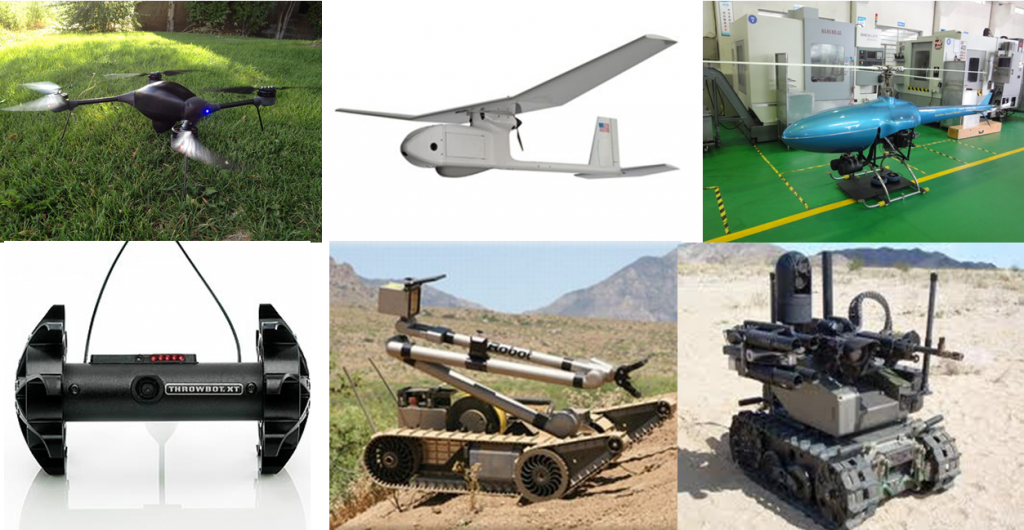
Droughtguard – A New Kind of Corn to Combat Droughts and Climate Change
In the past scientists have tried to improve crops to withstand the onslaught of insects, weeds and diseases. Drought tolerance was not a research focus. But it certainly is now with the increase in drought conditions in many areas of the world. Water usage remains an enormous problem in the United States, Canada, Australia, Russia and Africa. A second generation of drought-resistant corn suitable for these environments has been jointly developed by Monsanto, the agricultural giant, and BASF. Called Droughtguard, it is genetically engineered to maintain its growth for longer periods of time during droughts, lessening the stress to the plant’s physiology when soil moisture levels are low. It does this by developing larger root systems to absorb more moisture and displaying fewer leaves to decrease evapotranspiration. With this summer’s drought having devastated much of North America’s farming areas, the market for re-engineered plants may be the best way forward for farmers. Droughtguard is currently undergoing field trials and should be available commercially in time for 2013 planting.
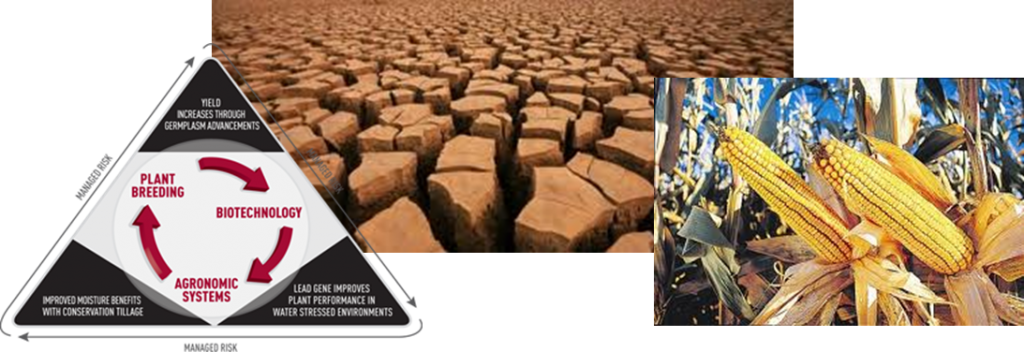
DuoLingo Lets You Learn a New Language While You Help Translate the Web
Recently I watched a TED Talk on DuoLingo, conceived by a serial inventor, Luis Von Ahn, who teaches at Carnegie Mellon University, and is the developer of ReCAPTCHA. If you are not familiar with ReCAPTCHA it is web forms security system that ensures the site that the form filler is human rather than a computer bot. While you type those two words you see in a ReCAPTCHA window unknowingly you are helping to preserve human knowledge digitally because one of the two words corrects an optical character recognition error made by optical character recognition software when translating pages of old books, periodicals and documents. You can see in the example below the frequency of errors that can occur.

Not to be outdone by this one amazing invention Von Ahn has gone on to use the same group problem solving concept in an onsite learn a second language program. But instead of correcting OCR mistakes, users are actually helping to translate web content as they work their way through each tutorial.
Currently DuoLingo lets you choose to learn Spanish, French or German. Other languages will be added over time. I’ve just started learning Spanish. You can see my progress below after completing Lesson 1. By the way, DuoLingo is fun so if you have a hankering for learning a language other than your own, why not sign up and try it. It’s free.
Floating Islands – An Answer to Rising Sea Levels?
Leave it to a Dutch company to come up with a solution to rising sea levels for low elevation island nations. After all the Dutch have been fighting the sea for centuries, reclaiming land and building massive dikes to hold off the water. The company is Dutch Docklands International. They have teamed up with the government of the Maldive Islands to replace their endangered land with artificial floating islands tethered to the ocean floor by cables. Why do the Maldive Islands need this? Rising sea levels are endangering much of the country’s islands. If climate scientists are right in their predictions of a 0.6 meter (2 foot) rise by 2100 then the Maldives may soon cease to exist as water inundates these low islands and salt water pollutes aquifers. The Maldives are already experiencing rising seas along their coasts with increases of 17.8 centimeters (7 inches) since 1900. Any additional increase will have an enormous impact on the more than 390,000 citizens of the country.
The joint venture project plans to build floating islands to replace land currently under threat. These islands will cover more than 800 hectares (80 million square feet) and include:
- 43 floating private islands featuring exclusive villas with private pools, beaches and docks
- 200 affordable water homes, each over 100 meters square (1,000 square feet), built on a single floating island that includes a beach club, pool, lagoons and water taxi services
- an 18-hole floating golf course ,underwater clubhouse and two luxury hotels contained on a single island
- a floating convention hotel in the shape of a starfish with a floating restaurant attached
Dutch Docklands has had plenty of experience building floating islands in the Netherlands anchoring these structures to the seabed using cables or telescopic mooring piles. Unlike natural islands, floating ones remain stable in storms. There is no erosion. In addition the floating island footprint on the ocean floor is small minimizing its impact on natural ocean currents and sea life.
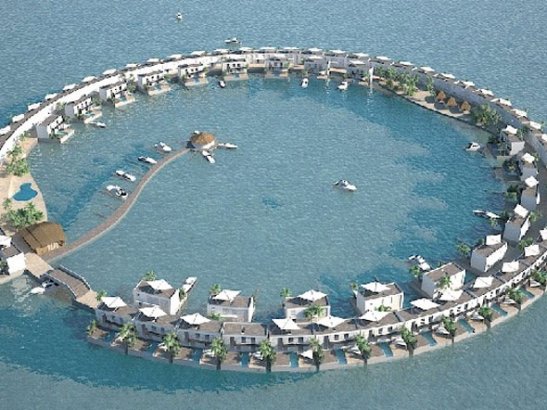
Solar Water Bag Could Save 3.5 Million Lives Each Year
Two industrial design students at University of Oregon, Ryan Lynch and Marcus Triest, have invented a bag that purifies up to 9.5 liters (2.5 gallons) of water every six hours. Their motivation is stated clearly on their website describing the technology.
“Dirty water is killing more people worldwide than wars and violence.”
The Solar Water Bag looks like a satchel, a bag on a shoulder strap. You collect water and while transporting it the decontamination process takes place using the Sun and ultraviolet radiation. The bag material is designed to trap ultraviolet light boosting the radiative effect. Bag features (see image which you can enlarge below) include:
- a translucent polyethylene outer layer
- a black polyethylene back panel.
- a small hand pump accessory to attach to a valve at the bottom
- a strap and back edging made of a durable nylon that is resistant to ultraviolet light and can withstand the rigors of a daily commute in search of water
- an attachable spigot
- a zipper lock to seal it to place the bag flat on the ground for greater sun exposure and faster decontamination
Total cost – about $5 to manufacture. The inventors are looking for seed capital to mass produce the Solar Bag.
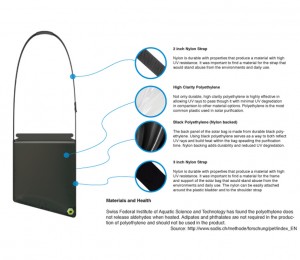
A Postscript
Readership continues to climb and more of you are providing many insightful comments whether here on the site, or at the companion Facebook and Google+ pages. You can also find links through Twitter and StumbleUpon.
As always I want to hear from you my readers so please keep coming and telling others about 21stcentech, the site that looks at technology past, present and future.
I’ll be taking a break next week but will be back and blogging very soon. Thanks for dropping by. – Len Rosen

